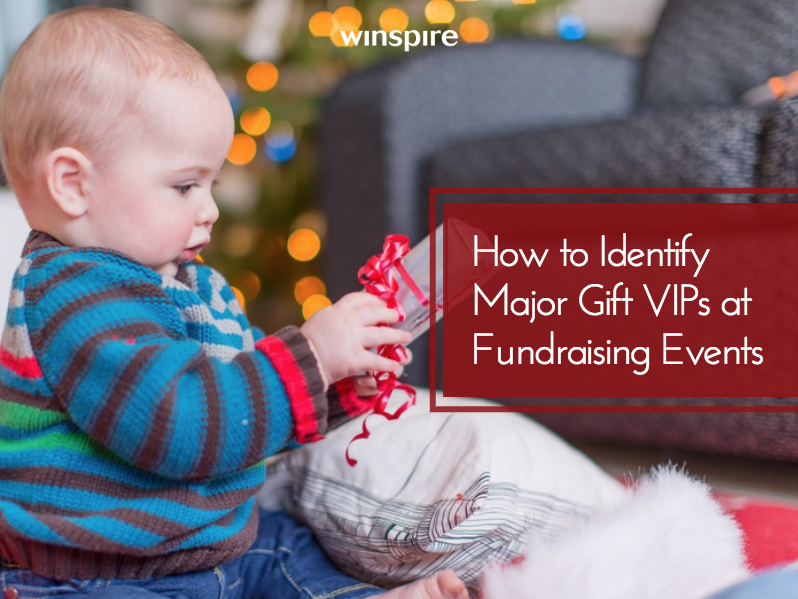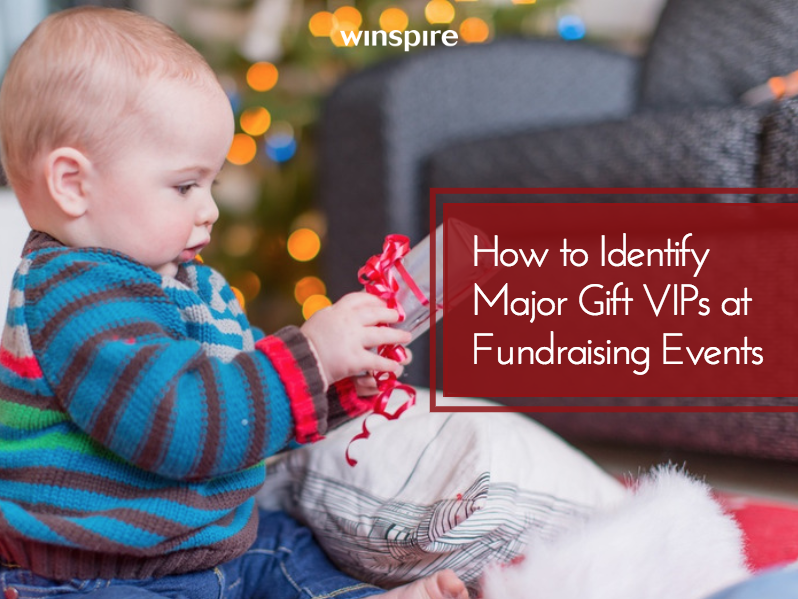With fall fundraising season on the horizon, your nonprofit may be gearing up for a special event. And while selling lots of tickets to the general public is great, your development team has an even more critical task: to identify and attract high net worth guests who could become major gift donors.
In this post, we will outline why it’s important to do your prospect development homework before your next fundraising event.
By identifying “very important persons” prior to your event, your development team will have the context and confidence to approach the right people at the right time. If you do – not only could your fundraising event sell out, you’ll continue to see a return on investment well after the party ends.
{{cta(’26dc4f4e-e222-4c01-b8a0-91aafb94ccd4′,’justifycenter’)}}
Fundraising Intelligence: 3 Pieces of the Major Gift Puzzle
 Fundraising intelligence is a proven strategy for nonprofit professionals to develop an understanding about donors, both individually and as a group. Informed by data and best research practices, fundraising intelligence ensures development teams can present the right ask to the right person at the right time with confidence — every time.
Fundraising intelligence is a proven strategy for nonprofit professionals to develop an understanding about donors, both individually and as a group. Informed by data and best research practices, fundraising intelligence ensures development teams can present the right ask to the right person at the right time with confidence — every time.
The 3 pieces of the major gift puzzle (what we at iWave call the “Three Keys”) are:
- Propensity – Does the prospect have a history of philanthropy?
- Affinity – Does the prospect have a connection to your cause?
- Capacity – Does the prospect have enough wealth to contribute a major gift?
To utilize the three keys, draft an event invite list based on prior prospect development experience and recommendations from colleagues, managers, and nonprofit board members.
For example, let’s say you have 100 names but aren’t sure if all of those individuals have major gift potential. As a further challenge, you need to identify an additional 100 guests for the invitation list.
Where do you start? The first step is understanding what (and whom) you’re looking for.
Define Your Ideal Donor
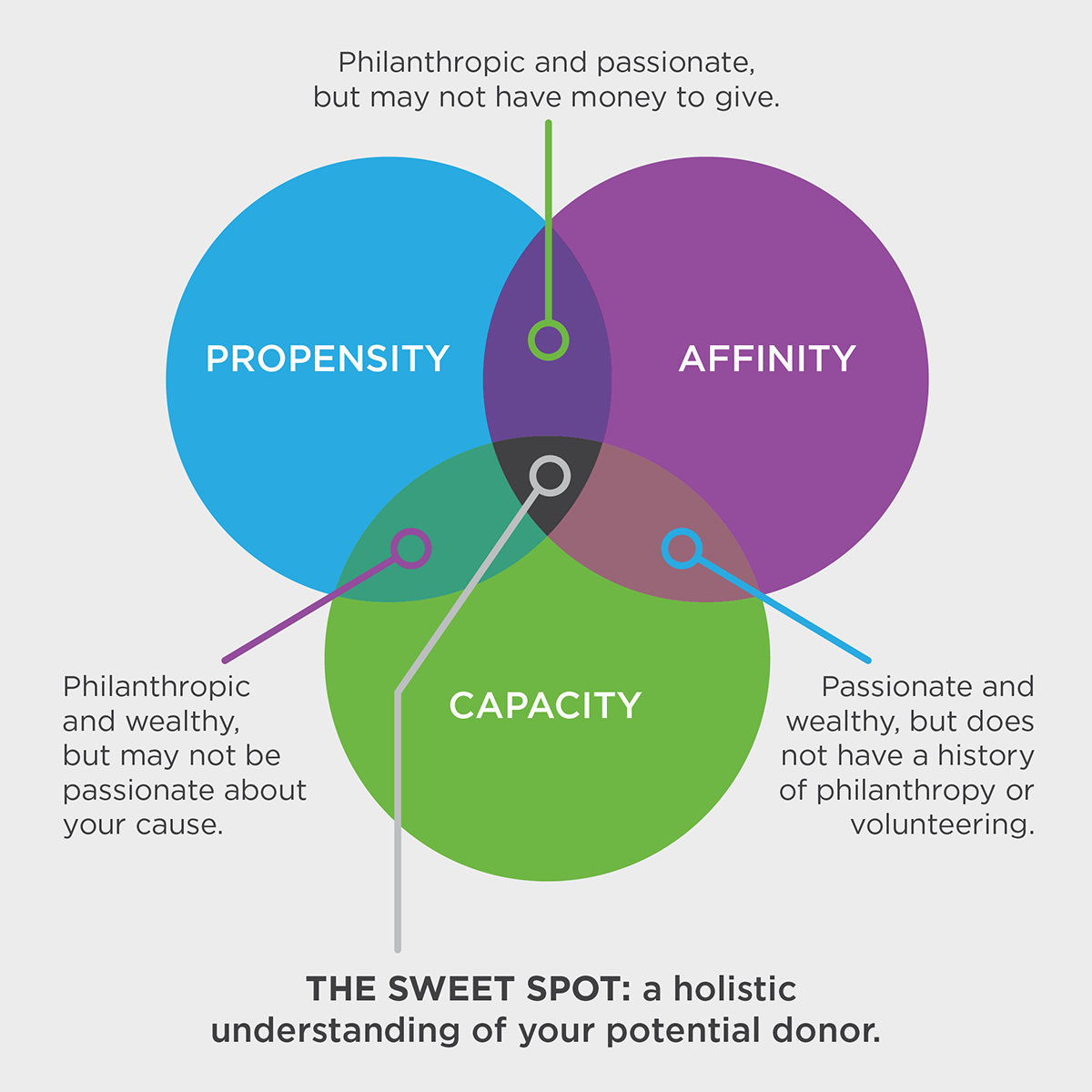 The exact dollar amount of a major gift may vary greatly. One nonprofit might consider a $1000 gift to be “major”. For another, a large gift might be $250,000 or even $1 million.
The exact dollar amount of a major gift may vary greatly. One nonprofit might consider a $1000 gift to be “major”. For another, a large gift might be $250,000 or even $1 million.
Before diving down any research ‘rabbit holes’, what does your ideal major gift donor look like? Write these characteristics down and keep them in mind throughout the research process. Depending on the fundraising intelligence platform you use to conduct your research, you might be able to customize settings so the system takes care of the hard work for you.
Some options include:
- Choose an ideal (and attainable) major gift threshold: $1000? $100k? Select a range from low to high.
- Select your organization’s affinity category, such as Healthcare or Higher Education.
- Decide which of the Three Keys to focus on:
- A wealthy individual with lots of cash on hand?
- A philanthropist with an extensive charitable/political giving history?
- A passionate supporter of your cause?
- A combination of all three? (Tip: Choose this one!)
Screen Event Guests for Indicators of Wealth and Philanthropy
“Wealth screening” is the most effective way to identify major gift opportunities.
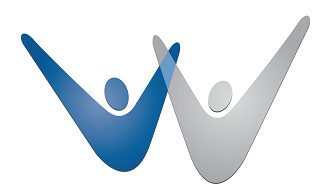 What is wealth screening?
What is wealth screening?
Wealth screening is a prospect identification process that highlights prospects with the greatest potential of contributing major gifts to a specific organization. This process involves filtering a list of donors/prospects against internal giving data (meaning whatever gift records exist in your donor database) and external wealth, biographic, and philanthropic information. The result is a prioritized list of your top potential donors.
Let’s go back to that list of 100 guests from which you need to identify potential major gift donors. You know some information about these people from their business cards. A few have even donated to your organization before. But beyond those few data points, you aren’t sure who is a true major gift VIP. Conveniently, a wealth screen helps you learn all this in just a few clicks.
How does it work?
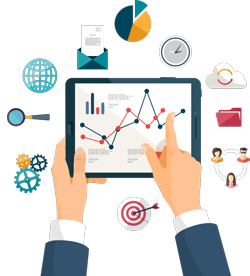 Take one provider, iWave. The iWave system provides a screening template that you can download and customize. Populate the template with as much information you have about your first 100 known guests. At a minimum, try to include first and last name, city, and state or province.
Take one provider, iWave. The iWave system provides a screening template that you can download and customize. Populate the template with as much information you have about your first 100 known guests. At a minimum, try to include first and last name, city, and state or province.
When the template is ready, it’s time to upload and submit. That’s all there is to it! Now the iWave system will take those 100 names and cross-reference them with over 1.25 billion wealth and philanthropic records. Within hours (sometimes minutes) you will receive results that prioritize your top-ranked prospects.
Based on your ideal donor settings, perhaps 20 of 100 individuals have bonafide major gift potential. These individuals are your VIPs. The middle 60 might be able to contribute modest donations. Unfortunately, the remaining 20 show no gift potential.
Does that mean you should immediately uninvite those “bottom” 20? Not at all. They could be very passionate about your cause, but simply not enough wealth to contribute a major gift. Those individuals might be interested in donating time as volunteers.
Build Prospect Lists and Generate Profiles
Remember those other 100 guests who haven’t been identified yet? Your wealth screen results may point you toward other leads via relationship data. But more than likely, you’ll have to start from scratch.
Using your fundraising intelligence platform, try building prospect lists using different types of data. Want a list of the richest 100 homeowners in your city? Try a real estate list. Or maybe you want to identify investors who have recently divested a large amount of securities. Alternatively you could look up the most influential philanthropists in your state or province.

Once you have identified your 100 guests, you can generate prospect profiles for these individuals (and don’t forget to create profiles for your wealth screen folks, too!). Profiles keep all the prospect’s information, from wealth and philanthropic records to fundraiser notes, organized in one place.
With the iWave platform, profiles include all sorts of information your fundraising team can use to prepare for introductions and meetings with prospective donors, including records of their past giving and interests.
Rock the Event!
Tonight’s the night! Your 200 guests will be arriving at the event venue soon.
If you’ve done your homework, you know exactly who your VIP guests are.
Make time for board members and fundraisers to introduce themselves. If there will be any speeches shared, be sure to thank all your guests for their support and share some good news about your organization’s work. Outline exactly how the donations from the event will directly impact your mission.
When donors understand and appreciate the true impact of each dollar they contribute, they will be much more likely to sustain and increase their donations in the future.
The Event is Over…Now What?
First, congratulations! Your event was a success, guests had a great time, they won bucket-list auction items, and all were eager to learn more about your organization’s work. So is it time to sit back and rest on your laurels?
Of course not! The work continues. Fundraisers and board members probably have lots of notes to share about various guests and VIPs. This qualitative information can truly enrich the quantitative information you’ve compiled with your fundraising intelligence platform.
Here are some steps you can take right away to maintain your momentum:
- Build out your profiles. Add any new information or data to keep each prospect’s profile up-to-date. Remember to add your profiles to your donor database.
- Say “Thank You”. Even memories of a great night fade fast. Reach out within two weeks of the event to thank guests for their support. This could be in the form of a letter, phone call, email newsletter, etc.
- Create a call-to-action. Is a particular guest inspired to contribute a major gift to your organization? You won’t know unless you ask. Now is the time to gauge interest, establish relationships, and set a date for follow-up meetings. Let prospects know you’re interested in learning about their philanthropic goals, and remind them your organization has lots of work left to do. Could there be a fit between their goals and your mission? Now is the time to find out!
Knowing who is coming to your next fundraising event is priceless information. With enough time leading up to the event, you can gather critical fundraising intelligence about your guests. This research will help you identify VIPs who could be your next major gift donor.
Your final takeaways: Remember to speak to a prospect’s philanthropic interests, create a call-to-action after the event is over, and of course, show your guests a great time they won’t soon forget!
Webinar Registration Now Open
If you found the content of today’s post helpful, please sign up for our upcoming webinar with iWave all about leveraging fundraising intelligence to maximize event fundraising results. We’ll share detailed breakdowns of propensity, affinity, and capacity ratings, including concrete strategies to rate your prospects.
{{cta(’26dc4f4e-e222-4c01-b8a0-91aafb94ccd4′)}}
The session will take place September 5th at 2pm ET. (If you can’t make it, sign up anyway and receive a recording after the event!)
—
 Today’s post was contributed by Ryan McCarville, Content Manager at iWave.
Today’s post was contributed by Ryan McCarville, Content Manager at iWave.
